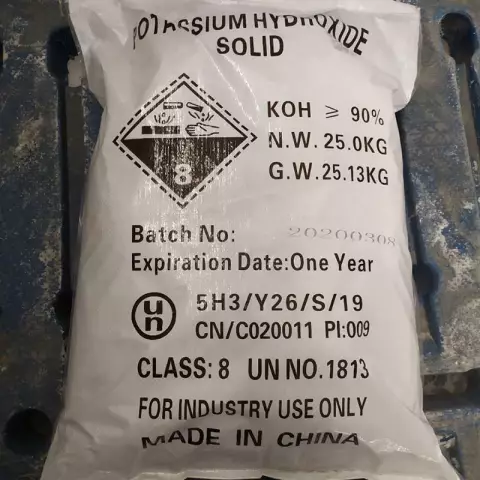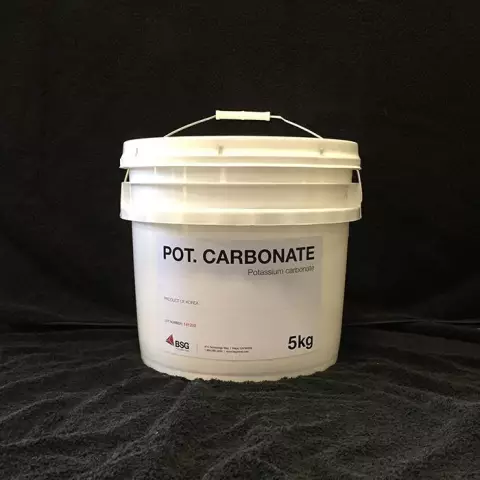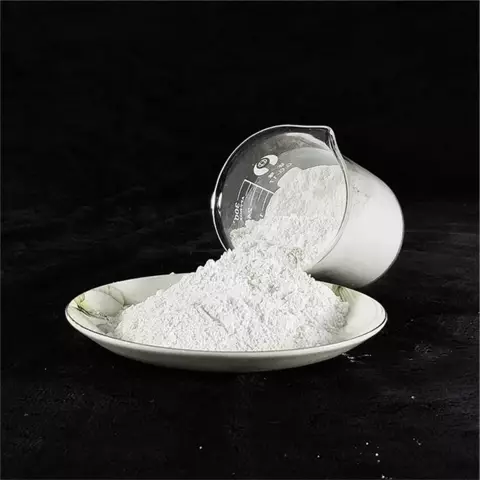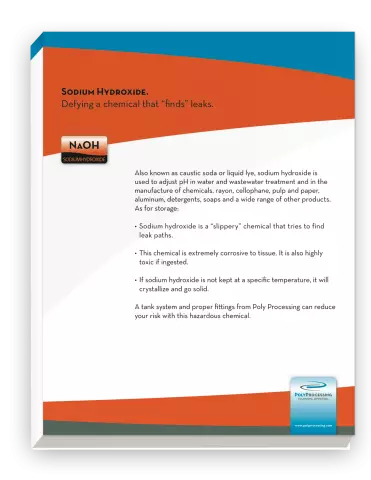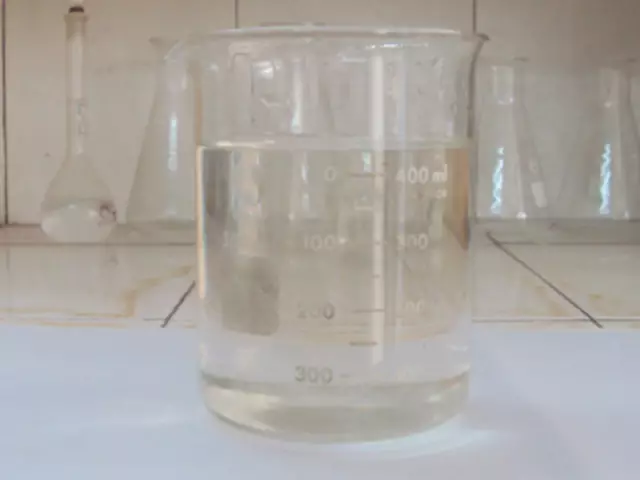- Author Rachel Wainwright [email protected].
- Public 2023-12-15 07:39.
- Last modified 2025-11-02 20:14.
Potassium hydroxide
Potassium hydroxide is an alkali which is called E525 additive in the food industry.

Other common names for potassium hydroxide are potassium hydroxide, caustic potash, potassium lye, potassium hydroxide, potassium hydrate, caustic potash, potassium hydroxide.
The use of potassium hydroxide as a food additive is permitted in the EU countries, in Russia, Ukraine.
Potassium hydroxide properties
Externally, potassium hydroxide is a crystalline colorless rods, balls, flakes.
E525 additive melts at a temperature of 404 ° C, absorbs moisture quickly and therefore requires special storage conditions, dissolves in methanol, ethanol and water.
Potassium hydroxide can dissolve organic materials.
Potassium hydroxide is obtained by electrolysis of a potassium chlorine solution. The substance is exposed to a polymer, asbestos or mercury cathode. The latter method is used most often, although the first two methods for producing potassium hydroxide that do not use mercury are considered safer.
E525 additive is considered a strong substance that violently reacts with tin, aluminum, zinc, lead and acids.
The food industry uses such a property of potassium hydroxide as the ability to affect the acidity of products. In fact, the E525 additive is an acidity regulator.
Potassium hydroxide application
If we take into account exclusively the food industry, then, here, most often, E525 is used by manufacturers of chocolate, cocoa and products from them.
In addition, potassium hydroxide can be found in baby food, frozen potatoes are treated with it.

Potassium lye can be used as an aid in the production of vegetable and fruit products - with the help of the substance, fruits, vegetables and roots are cleaned.
In the cosmetic industry, potassium hydroxide is used for the production of shampoos, soaps, bleaches, and shaving products.
The harm of potassium hydroxide
Working in a production facility with E525 additive, one must not forget that it is still an alkali, which belongs to the second class of hazard. Potassium hydroxide can corrode the skin and mucous membranes, causing chemical burns. An excess of potassium hydroxide, that is, prolonged contact with the substance, provokes the appearance of chronic skin diseases.
Serious precautions must be taken in the workplace using potassium hydroxide. Contact of alkali with human eyes is especially dangerous - cases of complete loss of vision have been recorded.
Found a mistake in the text? Select it and press Ctrl + Enter.

